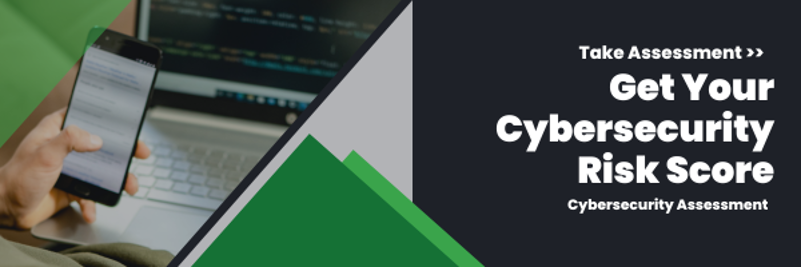In today’s interconnected world, the threat of cyber attacks looms larger than ever. The rapid advancement of technology and AI has made our lives more convenient, but it has also opened up new avenues for cyber criminals to exploit vulnerabilities. The devastating costs of cyber attacks are not something any business can afford to ignore.
If you aren’t aware of the alarming state of cyber attacks and how to protect your business with robust cybersecurity, now is the time to find out so you can protect your company.
The Current State of Cybersecurity
The numbers don’t lie. During the COVID-19 pandemic, cyber criminals used vulnerabilities to their advantage to exploit people and businesses. In 2020 to 2021, ransomware attacks more than doubled, increasing 92.7% year over year, and this trend shows no signs of slowing down.
By 2025, it’s predicted ransomware will be a $10.5 trillion industry and that 75% of all enterprises will have fallen victim to ransomware attacks. This means that your company could be in a cyber criminal’s crosshairs.
Did you know that 60% of companies go out of business within six months of suffering a cyber attack? While this is a sobering statistic, it’s the reality for many small-to-medium-sized business owners; it highlights the real-world, devastating costs of a successful cyber attack on their company.
Understanding the Anatomy of a Cyber Attack
To protect your business effectively, you need to understand how a cyber attack unfolds and what it’s made up of, as well as what cyber criminals want. Cyber criminals follow a series of steps in their attempt to exploit your weak spots.
- Reconnaissance: Hackers leverage automated software tools to scour the internet for information about your company. They look for vulnerabilities in your online presence, including your website, social media platforms and major login pages. This step often takes months and involves a lot of trial and error.
- The Attack: Once the hacker has information and identified a vulnerability, they begin the attack. Cyber attacks take various forms depending on the circumstances and type of attack. One of the more popular types is phishing emails, which looks like a normal email but will include a link to install malware, allowing the hacker to gain a foothold. Password cracking tools will continually attempt to log in to your accounts.
- Expansion: After gaining a foothold, hackers use malicious programs to maintain and expand their control over your entire network. They may steal sensitive information, infect your devices with viruses or corrupt data backups. The ultimate goal of ransomware, though, is to demand ransom payments.
- Ghost: During this last phase, hackers work to conceal their tracks, making it difficult and sometimes impossible to determine the attack’s origins and the damage’s extent. Hiding how much information was compromised can drive the company to its knees. To erase their presence, hackers use various software tools to automate cleanup and maintain anonymity.
The Costs of a Cyber Attack
The financial repercussions of a cyber attack can be substantial.
- One in ten organizations pay $1 million or more in ransoms
- The lowest average ransom payment is $197,000
- Nearly half the organizations whose data was encrypted paid a ransom
- Although cyber insurance can help recover from an attack, coverage can be restrictive
- Cyber attacks lead to lost productivity, delays in fulfilling customer requests, operational outages, production line shutdowns, reputational damages and revenue loss
So, with all these stats in mind, the big question you’re probably asking is: Can this all be preventable? The answer is…Yes!
Prevention is Possible
Despite these alarming statistics, preventing a cyber attack is entirely possible. With these tips and strategies, you can strengthen your defenses against cyber criminals.
- Cybersecurity Vision: Recognize that cybersecurity is a business risk that requires proper management. Cyber crime is here to stay, and cyber insurance alone is not enough. As a business leader, it’s your responsibility to set the vision and make the necessary changes to meet your objectives. Your cybersecurity vision will probably include protecting your corporate reputation, securing Intellectual Property and safeguarding your sensitive data. You’ll want to consider regulatory pressure, risk exposure and what your customers and vendors value.
- Leadership and Process: Your next step is to select the proper leadership and process to fulfill your cybersecurity vision. Don’t assume you’re secure just because you have IT support – hire a Chief Information Office (CIO) who can align your technology budget with your business goals, develop a forward-looking IT roadmap and keep your company aware of new risks and changes. Establish strategic, proactive IT processes to audit and align your company with cybersecurity best practices.
- Cybersecurity Best Practices: There are over 500 cybersecurity best practices you should implement, but the main five are to turn on two-factor authentication, enforce a complex password policy, remove local admin rights, isolate backups with air gapping and implement Office 365 instead of Exchange.
Thriveon Can Help Protect Your Company
At Thriveon, we understand the importance of cybersecurity and protecting your company from cyber attacks. We offer comprehensive managed IT and cybersecurity compliance services. Our fractional CIOs help audit and align your company with our 500 IT best practices to ensure you’re protected.
Schedule a meeting with us now to see how we can help protect your company. You can also take our brief 10-question survey to assess your level of cybersecurity risk or check out our Knowledge Center for more helpful tips.

